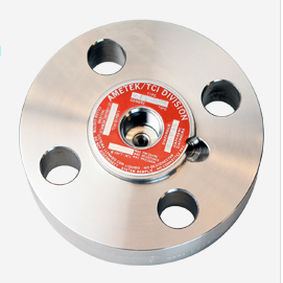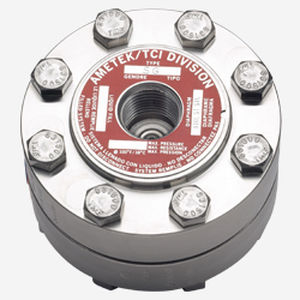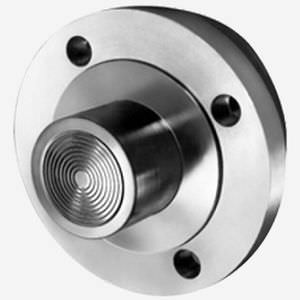
Diaphragm seal with flange connection SMJ for pressure gaugesprocess

Add to favorites
Compare this product
Characteristics
- Installation system
- with flange connection
- Other characteristics
- for pressure gauges
- Domain
- process
- Pressure
1,500 psi
Description
Type SMJ and SNJ Series diaphragm seals are flow thru type seals designed for pressure measurement applications involving jacketed pipelines where heated process fluids are used.
Theses diaphragm seals have slip-on flanges for ease of installation and alignment. Socket weld jacket connections are included for field installation.
The SMJ model is butt welded directly into the customer’s jacketed pipeline, whereas the SNJ includes a flange. Type SMJ and SNJ seals are continuous duty and feature a welded diaphragm seal design with the diaphragm welded directly onto the instrument housing.
The interior of the diaphragm top is contoured to fit the movement of the diaphragm at maximum allowable deflection. This minimizes distortion. A filling screw is provided standard.
SMJ and SNJ jacketed seals are available with 316 ELC stainless steel diaphragms and exposed parts. Other materials are available.
Jacket pipe, connections, and flanges are Schedule 40 carbon steel. Standard seals are furnished with ANSI Class 150 or 300 flanges.
The SMJ operating pressure is flange dependent. The SMJ seal pressure rating conforms to the Schedule 40 process pipe rating of 1500 psig at 100°F (103 bar at 38°C).
•Idéal for jacketed pipeline applications
-Welded diaphragm
-Diaphragm welded directiy to instrument housing
•Continuous duty
•SNJ features slip on flanges for easy installation
-Socket weld connections included on jacket
•SMJ butt welded directiy to pipeline
•Materials available for corrosive applications
Catalogs
USG-Capabilities-Brochure
4 Pages
Related Searches
- Measuring device
- Pressure transmitter
- AMETEK pressure gauge
- Level probe
- Liquid level probe
- Analog pressure transmitter
- AMETEK analog pressure gauge
- Membrane pressure transmitter
- Relative pressure transmitter
- Stainless steel pressure transmitter
- Analog level probe
- AMETEK threaded pressure gauge
- AMETEK level transmitter
- AMETEK stainless steel pressure gauge
- AMETEK liquid level transmitter
- AMETEK Bourdon tube pressure gauge
- Gas pressure transmitter
- AMETEK dial pressure gauge
- Absolute pressure transmitter
- Liquid pressure transmitter
*Prices are pre-tax. They exclude delivery charges and customs duties and do not include additional charges for installation or activation options. Prices are indicative only and may vary by country, with changes to the cost of raw materials and exchange rates.












